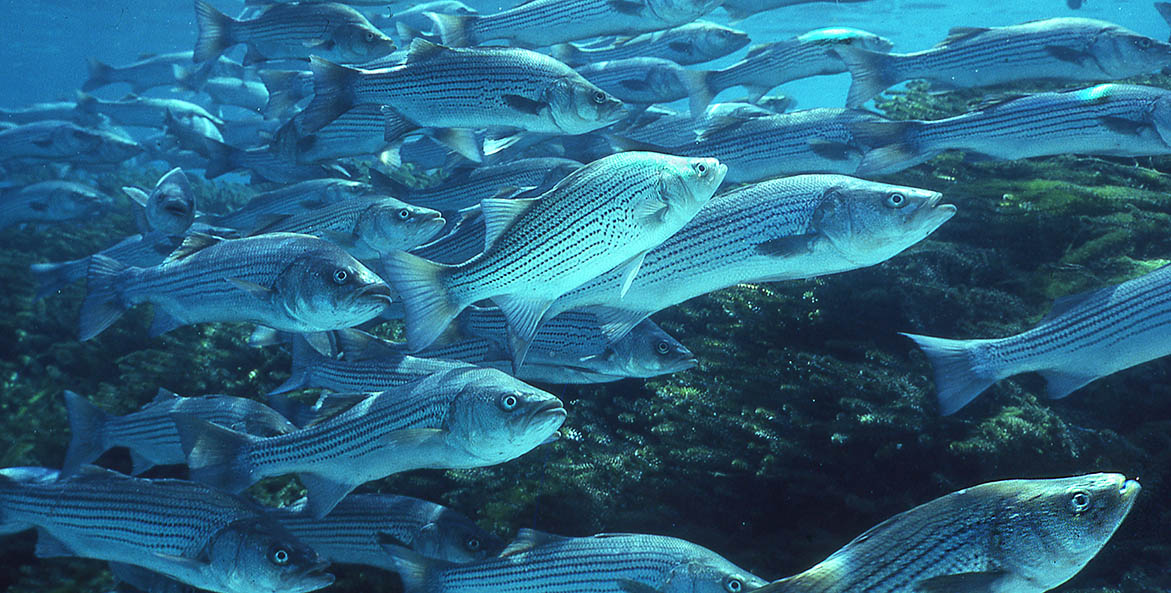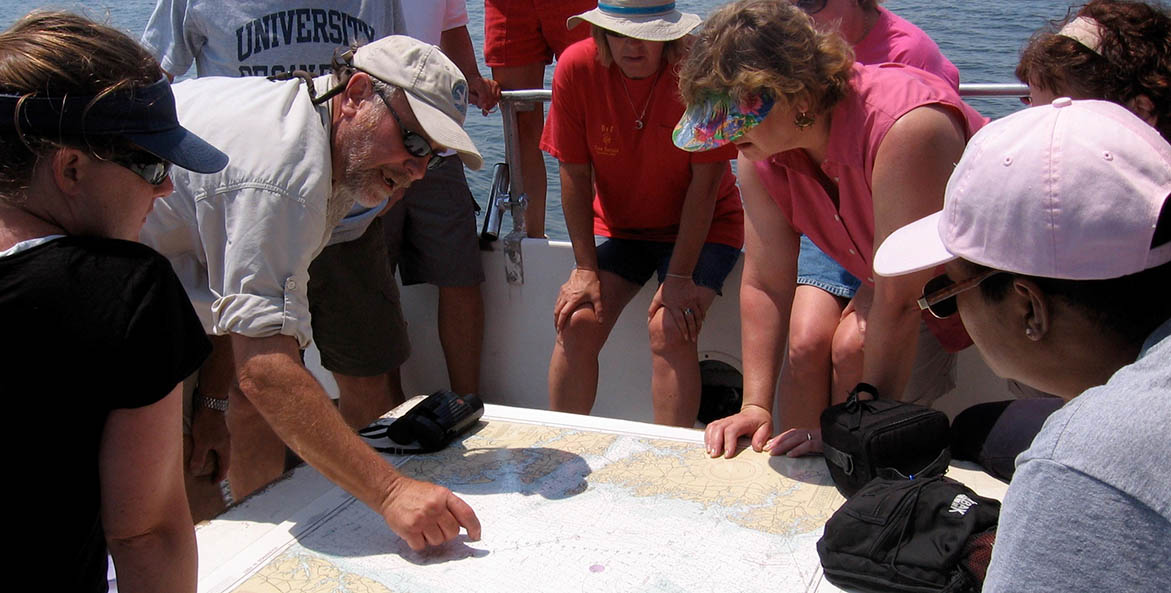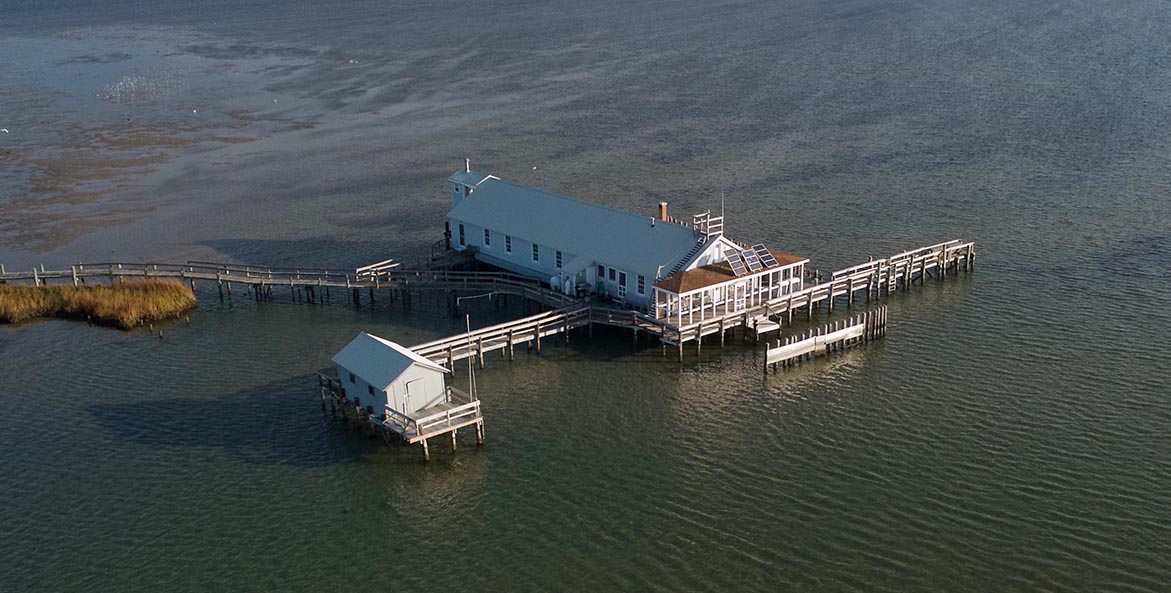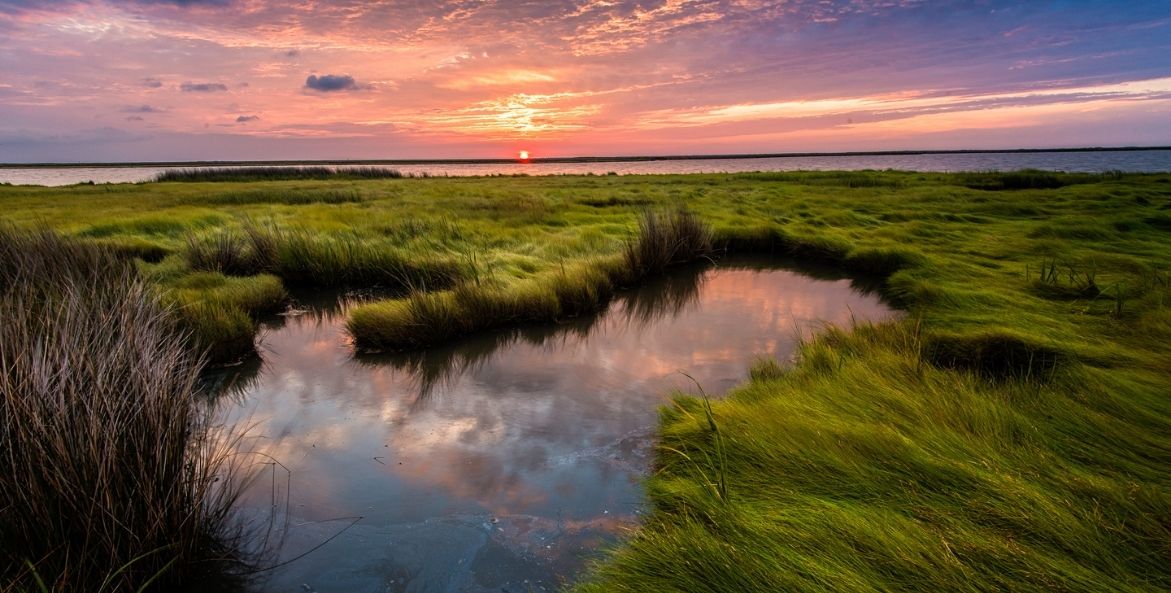Have you ever wondered why some fishing spots produce more fish than others? Or why certain beaches have more stinging jellyfish? Or how climate change impacts the Chesapeake Bay's most iconic fish and shellfish species? Or how to inspire students, our next generation of Chesapeake Bay stewards?
In an unassuming brick office building in Annapolis, Maryland, some of the nation's top marine scientists are answering those questions and more. The National Oceanic and Atmospheric Administration's (NOAA) Chesapeake Bay Office, the only regional office of its kind in the country, uses cutting edge science and community engagement to improve our understanding, management, and stewardship of the Chesapeake Bay.
The NOAA Chesapeake Bay Office (NCBO) plays a pivotal role in our understanding of the Chesapeake Bay ecosystem. Through research programs, long-term monitoring, and habitat restoration, NCBO provides insights for the Bay watershed. Through its leadership role in the EPA Bay Program's Goal Implementation Teams, the NCBO is responsible for the stewardship of our fisheries and coastal habitats, restoring Bay ecosystems, and ensuring the estuary and the species that depend on it have a healthy future for many years to come.
Let's dive into some of their work:

Schooling striped bass, also known as rockfish.
iStock/stammphoto
Restoring Habitats and Bolstering Fisheries
Oyster reefs provide many ecosystem benefits—the oysters that inhabit them are natural filter feeders that help clean and filter the water. As oysters grow, they create three-dimensional reef structures which provide habitat for hundreds of aquatic species—anemones, sponges, crabs, and fish to name a few.
What's more, oyster reefs are considered a keystone habitat for important fish species like black sea bass, red drum, summer flounder, and spotted sea trout. Many recreational fishers value these reef habitats for the abundance and diversity of fish communities they support. Through the unique catch-and-release fishing tournament called the Rod and Reef Slam, participants see first-hand the value of restoration reefs. The objective of the tournament isn't to catch the largest fish of the day, it's to catch and release as many different species of fish as possible while fishing on oyster reef restoration sites. The Rod and Reef Slam is a testament to the interconnectedness of Chesapeake Bay restoration. As experts work to bring oyster habitat back from historic lows, other species benefit.
The NOAA Chesapeake Bay Office is one of the key agencies implementing large-scale oyster restoration in the Chesapeake Bay. NCBO Scientists and resource managers developed the restoration blueprints that are now guiding the construction of oyster reefs in 10 rivers in Maryland and Virginia. These scientists conduct habitat assessments to understand baseline conditions before and after oyster restoration projects, providing critical knowledge to resource managers who work to ensure long-term success of these restoration efforts. The data and information the NCBO collects and provides helps other resource managers across the globe shape their own restoration projects based on lessons learned from the global leadership here in the Bay.

Bill Portlock leads an environmental education experience in the middle of the Chesapeake.
Bill Portlock/CBF Staff
Educating the Next Generation of Bay Stewards
As the federal lead for K-12 education in the Chesapeake Bay Program partnership, the NOAA Chesapeake Bay Office provides the tools, resources, and funding necessary to ensure the next generation of Bay stewards have a comprehensive understanding of our complex watershed.
Throughout the watershed, students, teachers, and experts team up year-round to learn about the Chesapeake's diverse habitats through hands-on learning. Students engage in defining local issues, participating in field investigations, learning to synthesize information and draw conclusions, and participating in action-oriented projects. This learning, known as Meaningful Watershed Educational Experiences (MWEE), is a cornerstone of environmental education, and enables student learning in the context of life-relevant, real-world problems.
NCBO implements the Chesapeake Bay Watershed Education and Training (BWET) program, which delivers grant funding across the watershed for dozens of environmental literacy programs, educating tens of thousands of students, and providing professional development for hundreds of teachers. BWET helps equip educators with the skills, knowledge, and confidence to effectively teach students about the watershed, ensuring the next generation of bay stewards are environmentally literate. For instance, NOAA has provided resources to support teacher training in Pennsylvania's Susquehanna River basin on how to incorporate MWEEs into district-wide curriculum. This helps ensure long-term, comprehensive environmental education is integrated across school districts.
What's more, NCBO helps states across the watershed organize. It connects state departments of education with their natural resource agencies, focusing on key opportunities to benefit students and share innovative ideas (such as MWEEs) between states.
NCBO also runs the Environmental Science and Training Center, providing educators the knowledge and tools they need to deliver up-to-date science information to the next generation. Through workshops at both the Oxford, Maryland center, and throughout the watershed with partner organizations, teachers learn how to apply science with students in the classroom and in the field.

CBF's Fox Island Environmental Education Center, which offered magical teaching moments for 40 years, is now unsafe for student experiences due to sea-level rise and erosion.
Bill Portlock/CBF Staff
Confronting Climate Change
The Chesapeake Bay is facing impacts from climate change, including stronger and more frequent storms, higher average annual temperatures, and sea level rise. Along the shores of the Bay, these impacts are manifesting in real time.
NCBO is on the front lines of advancing our understanding of how climate change will impact the Chesapeake Bay, particularly fish species and the habitats they depend on. NCBO has brought together experts from across the watershed and beyond to understand how rising water temperatures, low oxygen ‘dead zones', and habitat availability will change over time and the impacts that will have on commercial and recreational fisheries. Ongoing work will quantify the availability of habitat for species like striped bass, summer flounder, and black sea bass. Researchers are also working to identify the environmental drivers that determine the productivity of forage fish species like Atlantic menhaden, which serve as primary prey for the Bay's top predators. These insights are critical to understanding the challenges climate change presents for the Bay and for managing the fisheries that are so important to the region.
The ability to address the complex challenges of climate change impacts on our watershed demand scientific expertise and adequate funding. As federal lead for the climate resiliency goal team, the NCBO is equipped to continue leading climate resilience and adaptation work in the watershed. However, to stand up to the challenges climate change poses and position the next generation of Bay stewards for success, deeper investments must be made in this vital work.
The SEEE Act
With just a few short years left to achieve the pollution reduction requirements of the Chesapeake Clean Water Blueprint, coupled with the looming threats climate change poses to our region, the work of the NOAA Chesapeake Bay Office has never been more important.
Recently, a bipartisan group of U.S. Senators and Representatives introduced legislation that would ensure the NOAA Chesapeake Bay Office can continue its important work here in the Bay. The Chesapeake Bay Science, Education, and Ecosystem Enhancement (SEEE) Act would improve our understanding of climate in the Chesapeake Bay, increase public education on watershed protection activities, and expand Chesapeake Bay environmental education programs that raise awareness and foster Bay stewardship for K-12 students and teachers here in the watershed.
Passage of the SEEE Act would ensure NOAA's Chesapeake Bay Office continues to deliver vital benefits to our beloved Bay. Sign up to be an advocate for the Bay and learn more about opportunities to speak up for the important work of the NOAA Chesapeake Bay Office and others working to advance the health of the Bay!
Katie Morgan, Federal Outreach and Advocacy Manager, CBF



